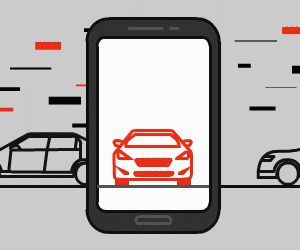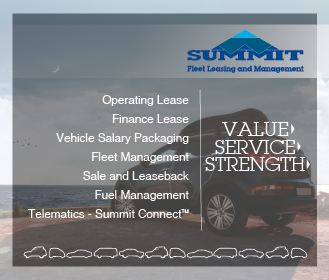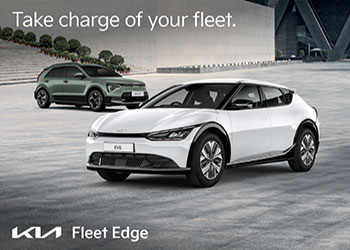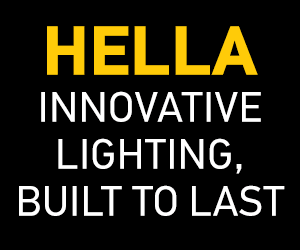How hard can it be? Surely you can just glue some cheap Bunnings shelving inside your vans, screw a couple of dog kennels to the tray of your ute and bolt a few bits of thin tubular steel to the front of each fleet vehicle. Who’s gonna notice, right? Well, you get what you pay for.
Let’s face it, taking shortcuts when it comes to occupational functionality and safety is about as good an idea as buying second-hand Daewoos with reluctant odometers and intermittent headlights for passenger duties. Clearly, you wouldn’t subject your drivers to anything of the same. Which is why businesses like CSM Body Services, HiDrive and Carryboy exist, to assess, design and build a tailored, safe and practical system that, like Shower Power, actually works.
“We like to actually meet with the right person who can explain what they’re after,” says national sales manager Brian Attwood. “We take a demonstrator vehicle out to a potential customer and discuss the different concepts available.”
When it comes to state-based registration requirements, body builders like CSM issue compliance certificates that signal the vehicle’s safe and approved design, especially interstate.
“We have to design and make everything to be ADR compliant,” Brian said, “in some cases they need to be interchangeable with other vehicles down the line. For example when it comes to rear overhangs, each vehicle has manufacturer’s recommended body sizes and widths which need compliance. Height is another issue.”
For fleets that operate at night or in low-light conditions, lighting needs to be specifically designed to function but also be legally acceptable. You can’t just bolt a whopping great flood lamp to the sports bar.
“External lighting needs to be visible at certain angles, but without pointing rearward; license plate lighting has to stay compliant; clearance lights must be fitted in certain places. Even mudguards must properly cover the wheel’s track and mudflaps cannot be over or under a certain height off the ground. On top of all this, you have to deliver what the customer needs for their safety requirements on top of other road users.”
For all the diverse situations and curious predicaments even the most rugged fleet vehicle may find itself in, there isn’t much in a quality body service’s repertoire they haven’t been able to accommodate for. But that doesn’t mean specialist body builders can rest on their laurels – because complacency is when accidents happen in the workplace.
“I can’t think of an incident where we haven’t been able to comply with ADR,” Brian continues, “But recently there has been a lot of work on front and rear axle weights. A lot of the requirements are already integrated into a design template so that a compliance can be recognised interstate.”
“I know of a situation many years ago where a vehicle was fitted with an aftermarket body, including non-OEM tail lights. It was making a right turn. However, while the front right indicator flashed, it was the left indicator that flashed at the rear, so a vehicle making an overtaking move pulled out and there was a huge crash. The crash assessment found the installer who had fitted the indicators checked they were working by using the hazard button, instead of the steering column stalk which would’ve picked up the fault.”


Brian explains that the old adage ‘you get what you pay for’ still rings true and underscores the importance of getting the design and concept stage right. Because undoing something further down the line is difficult.
“There’s a certain standard that’s accepted which most people or suppliers comply with. But that doesn’t exactly always comply with industry standards. For example, some roof rack systems might only be rated for taking 50kg, but a plumbing or carpentry fleet might routinely take up to 200kg on the roof. So while there’s nothing in ADR saying it needs to take 200kg on the roof, the industry demands more. If you’ve got a body on the outer edge of those limitations, it restricts the user being able to operate the vehicle with a safe, legal margin.”
Add these envelope-pushing conditions to an emergency driving situation such as hard emergency braking or swerving, and the results can be disastrous. Think centre-of-gravity, unbalanced loads, brake fade or structural vehicle failure.
Using axle weights for example, the GVM on a Ford Ranger is 3.2 tonnes, but the legal amount on front and rear axles is 1480kg and 1850kg respectively, which combined actually equals 3.33 tonnes. “There’s no point saying the whole vehicle equals 3.2, ‘we’re good to go’, if the axles are overloaded and vice versa; if the axles are at their limit you could still be over your GVM.”
“Peter the plumber can get away with overloading because he’s only answering to himself. But as soon as you have a fleet and the axle weights are out, the vehicle is overloaded or pushed beyond breaking point, the fleet manager comes under fire. Especially if third parties are involved in an incident.” Clearly there’s more to this business than just welding some sheet metal together and saddling up.
“We don’t let ‘just anybody’ fit our bodies, only approved depots if not our own – so there’s strict control on the fit procedure and standard. As opposed to jumping online and shipping a bunch of canopies at mates’ rates and fitting out the back on the weekend,” Brian jokes.
By most reports, it seems the body building business (not just CSM) is in good stead and most fleet managers realise not only the benefits of quality tailored workmanship, but also their responsibility to provide the right tools for the job.
“We’re finding that fleet managers are increasingly expecting us to know and recommend. As business leaders they’re expecting us to make suggestions and design ideas. Rear drawers for example are a haven for big heavy items like crow bars, star pickets etc, and we have to design them to limit the stowage space so that you can’t overload the draw or the vehicle.”
One of the CSM design team member’s sole job is to take feedback from customers and sales to refine and steer the products down the right path. It’s certainly not a cookie-cutter process, products are fairly bespoke based on what people want, despite the impression given by the images in this article.

“The general public are far more aware of vehicle safety than a decade ago, especially vehicle safety,” Brian adds, “I would say the top four or five Australian body builders are among the best manufacturers in the world. But it’s our government that I’d say isn’t on top of things as much as they probably should be.”
“We’re not as strict in policing and scrutinising the quality control as say North America, we’re lacking in that department. More fleet managers are coming to us more informed than in the past which helps. So their input helps develop our products and they are increasingly more on top of what they can and can’t achieve.”
There’s also an interesting dynamic between the role body builders play in intimately working with vehicle manufacturers’ products. While Brian admits they don’t hear from carmakers, there’s active discussion between CSM and their customers. Particularly when it comes to engineering or re-engineering their vehicles.
“Toyota and Ford are the two biggest players at the moment in the light commercial range, as far as our customer base is concerned. While we don’t hear from them, we do watch closely what all manufacturers are doing with their utes.” Being such a competitive market for utes right now, it’s easy to imagine the homework CSM, Carryboy, Autosafe, HiDrive et al does to design for fleets.
“We’re on neutral ground (with carmakers), but we can offer advice and information regarding what the various vehicles can and can’t do on a nitty gritty level. It’s nothing personal, just what we learn in the process. Sometimes all we see on the road are commercial vehicles!” While there are far more bull bars sold by ARB for example compared with service bodies, it needs to be said that CSM welcomes interaction from manufacturers in developing their fleet-friendly vehicles.
“As body builders we’re the first to know of developments and improvements. We could give them such valuable feedback due to our conditions in Australia compared to Europe and America.”
“We also continue to focus on the standardising and serial numbering of products across the fleet so parts can be tracked and replaced. That’s the hard work often unappreciated, when a replacement canopy door is needed and your fleet can’t just avoid replacing or simply tape it shut.”
“The lighter we can make something without compromising on strength, the better, and this is something we’re always working on. Aside from weight, safety is probably the biggest constant in our business – people are always looking for a lawsuit and we’re trying to insulate our customers and ourselves as best we can. Designing systems that avoid back injuries, low-height head injuries, signage and visual components are all in refinement – ergonomic development basically. We’re learning more about working with various industries all the time.”
It’s easy to get the impression that Australia has no manufacturing future listening to the doomsdayers, but fleet is offering our designers, engineers, welders, electricians and the rest to apply their skills. It’s a reassuring thing knowing that fleets with relentless daily safety obligations and operational functions have an ally in the business of moving stuff securely. Companies like CSM are not only performing to an evidently high standard to benefit your fleet, but in doing so support the little people, the workers behind the scenes of the automotive industry.
For more information about CSM Service Bodies, click here











